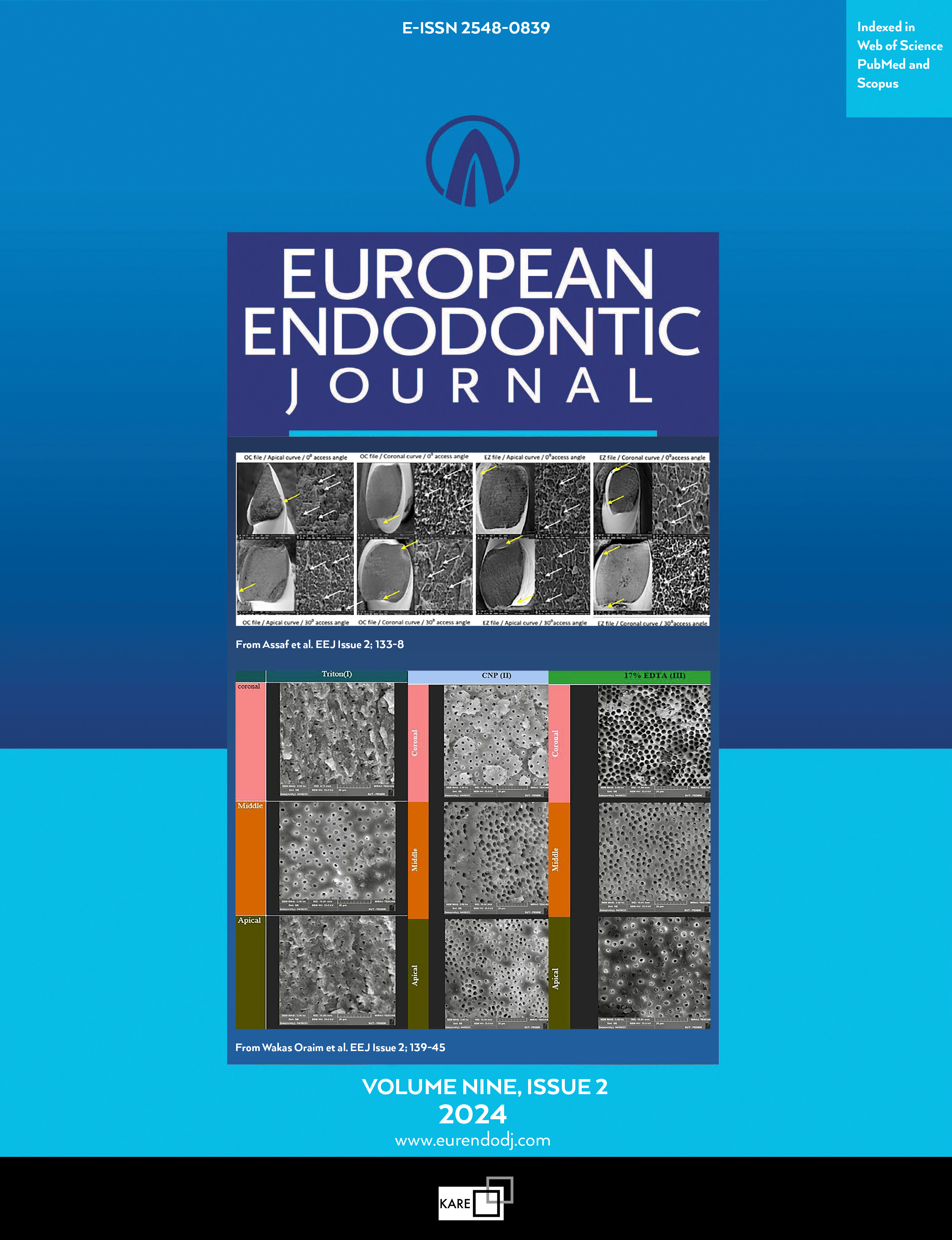Metrics
2022 IMPACT FACTOR
5 year Impact Factor
Eigenfactor
2022 CiteScore
Journal Citation Reports (Clarivate, 2023)(Dentistry, Oral Surgery & Medicine (Science))
Influence of different post luting cements on the fracture strength of endodontically treated teeth: An in vitro study
Abdulaziz Samran1, Mohammed O. Najjar2, Ahlam Samran1, Majed Al- Akhali3, Sadeq A. Al- Maweri4, Mutlu Özcan51Department of Restorative and Prosthetic Dental Sciences College of Dentistry, Dar Al Uloom University, Riyadh, Saudi Arabia2Department of Applied Science, College of Dentistry, Egypt American International University, Cairo, Egypt
3Department of Prosthodontics, College of Dentistry, Ibb University, Ibb, Yemen
4Department of Oral Medicine and Diagnostic Sciences, Alfarabi Colleges, Riyadh, Saudi Arabia; Department of Oral Medicine, Sanaa University, Yemen
5Department of Clinic for Fixed and Removable Prosthodontics and Dental Materials Science, Dental Materials Unit, University of Zürich, Zürich, Switzerland
Objective: To evaluate the fracture resistance of endodontically treated mandibular premolars restored with glass fiber posts using different luting agents.
Methods: Twenty-four extracted single-rooted mandibular premolars were endodontically treated, and post spaces were prepared to receive fiber posts. They were assigned to three test groups (n=8) according to the type of cement used for the cementation of glass fiber posts: RC group: adhesive resin cement group (etch and rinse), SC group: self-adhesive resin cement group, and GC group: glass ionomer cement group. Teeth in all groups were adhesively restored with a composite resin core material and crowned with Ni-Cr crowns. All specimens were subjected to tangential loading using a universal testing machine until fracture at 30°. Failure loads were recorded, and data were analyzed using one-way ANOVA followed by Tukeys HSD test (α=.05).
Results: Specimens in the RC group were more resistant (258.3±12.7 N) to fracture than those in the SC (218.7±11.1 N) and GC (165.4±8.9 N) groups (P≤.001). One-way ANOVA indicated that the type of cement had a significant effect on the fracture resistance of endodontically treated lower premolars (P≤.001).
Conclusion: The type of cement that was used to fix glass fiber posts was a determining factor of the fracture resistance of endodontically treated lower premolars.
Corresponding Author: Abdulaziz Samran, Saudi Arabia
Manuscript Language: English
(1105 downloaded)


